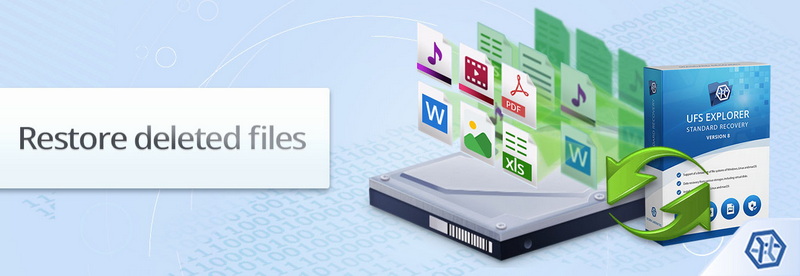Whether you have inadvertently deleted an important file or are dealing with a corrupted hard drive, restoring data can be a daunting task. UFS Explorer Data Recovery is designed to help you recover your lost data quickly and easily. This powerful software solution offers advanced scanning capabilities, allowing you to locate and extract lost or damaged files from any type of storage media. In addition, the program provides an intuitive user interface that makes data recovery a breeze. In this article, we will discuss how you can use UFS Explorer Data Recovery to recover your lost data.
Read on to learn more about this powerful data recovery software and how it can help you retrieve your precious files.
Mục lục nội dung chính
The Benefits of Using UFS Explorer Data Recovery for Your Data Recovery Needs
UFS Explorer Data Recovery offers a number of advantages over other data recovery solutions. First, it is an incredibly powerful tool that can quickly scan your storage media and locate lost or damaged files. It also provides a highly intuitive user interface that makes performing data recovery tasks easy and efficient. Furthermore, the software supports all major file systems, such as NTFS, FAT, HFS+, and ext2/3/4. This ensures that you can recover data from virtually any type of storage media.
Another key benefit of UFS Explorer Data Recovery is its advanced recovery algorithms. These algorithms enable the software to locate and extract even corrupted and damaged files accurately and safely. Additionally, the program is designed to be extremely reliable and efficient, allowing you to recover data from even the most challenging scenarios. Finally, UFS Explorer Data Recovery provides integrated support for cloud services, enabling you to easily restore files from online storage accounts.

With its powerful scanning capabilities and intuitive user interface, UFS Explorer Data Recovery makes recovering lost or damaged data a breeze. Whether you’re dealing with a corrupted hard drive or a lost USB flash drive, this powerful software solution can quickly and easily locate and extract the files you need. So if you’re looking for an effective and reliable data recovery tool, UFS Explorer Data Recovery is definitely worth considering.
How to Recover Lost or Deleted Files Using UFS Explorer Data Recovery
Recovering lost or deleted files using UFS Explorer Data Recovery is a fast and straightforward process. To get started, launch the program on your computer and select the drive or device you’d like to recover data from. Then, select the scan mode based on your data recovery needs. Steps to perform:
Step 1: Launch UFS Explorer Data Recovery and select the drive or device you want to recover data from.

Step 2: Select the scan mode based on your data recovery needs.

Step 3: Once scanning is complete, you will be presented with a list of the deleted or lost files that have been found.

Step 4: Preview and compare each file to determine its contents.

Step 5: Chose and save all data.
In conclusion, UFS Explorer Data Recovery is an excellent solution for recovering lost data from any type of storage media. The software provides an intuitive user interface that makes the entire process simple and straightforward. With its advanced scanning capabilities, you can quickly locate and extract lost or corrupted files. By following the four-step process outlined above, you can easily recover your precious data in no time. UFS Explorer Data Recovery is the best choice for anyone looking for a reliable and powerful data recovery solution.
Tips and Tricks for Getting the Most out of UFS Explorer Data Recovery
1. Make sure to select the right scan mode for your data recovery needs.
When it comes to data recovery, selecting the right scan mode is essential in order to ensure that you get the most accurate and complete results. With UFS Explorer Data Recovery, there are several available scan modes – including Quick Scan, Standard Scan and Deep Scan – each providing different levels of granularity for locating lost or deleted files.
2. Take advantage of the preview feature to quickly identify which files you want to recover
Before you start the file recovery process, UFS Explorer Data Recovery lets you preview and compare each file to determine its contents. This is a great way to quickly identify which files you want to recover and will help save time in the long run. You can also use this feature to check if a file has been corrupted before attempting to recover it
3. Use the filtering options to help narrow down search results and speed up recovery time
UFS Explorer Data Recovery provides several helpful filtering options that can help narrow down the search results and speed up recovery time. You can use this feature to filter out files based on specific criteria such as file type, size, date and more. This is particularly useful if you only need to recover a particular set of files or are looking for particular
Conclusion
UFS Explorer Data Recovery is an advanced and reliable data recovery tool that enables you to easily recover lost or deleted files from any type of storage media. With its advanced scanning capabilities, intuitive user interface and powerful filtering options, you can quickly locate and extract lost or damaged files. By following the four-step process outlined above, you can easily recover your precious data in no time. UFS Explorer Data Recovery is the best choice for anyone looking for a reliable and powerful data recovery solution.
Try it today to find out how it can help you recover your valuable files!
Thank you for reading cuudulieu article. We, always update the latest knowledge to you as soon as possible








